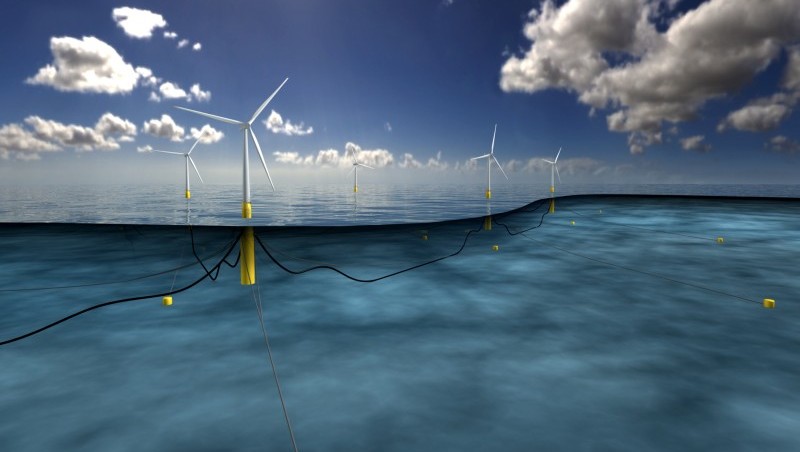Following a string of warming records and weather extremes, the need to stop chucking greenhouse gases into the air has never been clearer.
Yet weaning the global economy off climate-polluting fossil fuels can seem an uphill battle.
Here are seven reasons to be cheerful, as clean energy makes inroads from Portugal to Pakistan.
1. India leads on LEDs
Delhi has distributed more than 100 million LEDs since last May, according to an online tracker, in an initiative to expand access to electric lighting without overstretching the power grid.
Energy minister Piyush Goyal plans to roll it out across the country, replacing 770m incandescent bulbs by 2019.
With India accounting for 12% of global LED sales, this bulk buy is helping to slash prices – more than 80% in two years, Goyal said.

Night market, Goa (Flickr/Jim Driscoll)
2. Coal-free UK
Well, temporarily at least. For the first time since Britain began burning coal for power in 1882, last week the fuel’s share of the mix fell to zero – not once, but seven times.
A rising carbon floor price, cheaper gas and low power prices have combined to make coal-firing less economic.
While 16 coal plants are still on the system, the government aims to phase them out completely by 2025.
GB electricity: wind 6.1% coal 0.0% nuclear 20.8% gas 39.2% hydro 0.4% import 7.3% solar 18.7% biomass 6.5% storage 1.0% Demand 32GW
— My Grid GB (@myGridGB) May 14, 2016
3. 100% renewable record
That’s nothing, says Portugal. According to national grid data analysed by the Portuguese Renewable Energy Association (APREN), last week the country ran on renewables for four days straight. That’s 107 hours of non-stop green power.
Despite limited connections with the rest of Europe, Iberian network operators are managing to integrate large volumes of variable wind power onto the system.
In 2014, renewables supplied a record 63% of Portugal’s electricity. Last year, even as drought hit hydropower generation, clean sources made up half of the mix.

Portugal has a growing wind power sector (Pic: Wikimedia commons/CorreiaPM)
Reports of Germany nearing the 100% milestone turned out to be premature – or at least requiring a looser definition of “almost all”.
Provisional data from Agora Energiewende showed renewable generation peaking at 45.5GW on a sunny, windy Sunday afternoon, a whisker away from demand of 45.8GW.
The think tank later admitted it had jumped the gun and the actual renewable share was up to 82%. Oops.
4. Corporate clout
Some of the world’s biggest corporations are using their market clout to scale up renewables, guaranteeing a buyer for power produced by big installations.
Tech giants Facebook, Google and Apple have led the charge, followed by everyone from General Motors to Dow Chemical.
Collectively, they contracted 3.21 gigawatts of capacity in the US last year and 0.43GW in the first months of 2016, according to the Rocky Mountain Institute.

5. Poo powers Pakistan
Farmers are running irrigation pumps on biogas from buffalo dung, under a government-backed initiative in Pakistan.
One of 17,000 beneficiaries so far told the Thomson Reuters Foundation he was saving US$10-12 a day in diesel costs. Another saved $850 a year by using the slurry as fertiliser.
The Punjab provincial government aims to convert 100,000 pumps by the end of 2017, paying half the cost in a $67m programme. It is expected to shrink agriculture’s carbon footprint by 5%.

A source of energy (Flickr/Benny Lin)
6. Oil epiphany?
ExxonMobil is funding research into fuel cells that capture carbon dioxide from power station chimneys, generating extra power to boot.
Shell is venturing into wind, setting up a new energy division with a US$200 million annual capital spending budget. Total has gone one better, putting half a billion a year into biofuels and solar.
They are still, essentially, oil majors. This investment represents a tiny fraction of the sums they pump into pumping petroleum.
All the same, under pressure from divestment campaigners, shareholder activists and attorneys general, it shows the industry can no longer afford to ignore the world’s low carbon direction.
As an uncompromising report from international affairs think tank Chatham House put it: their old business model is dying.
7. Winds of change
In another oil industry foray into green energy, Statoil got the go-ahead this week for the world’s largest floating windfarm.
Five 6MW turbines are expected to start generating by the end of 2017 in the North Sea, off the coast of Scotland. More than 40 similar projects are in the pipeline worldwide.
The technology opens up a cheaper way to generate electricity offshore, without the need for towers stretching right down to the seabed.

Artist’s impression of floating windfarm (Pic: Statoil ASA)
